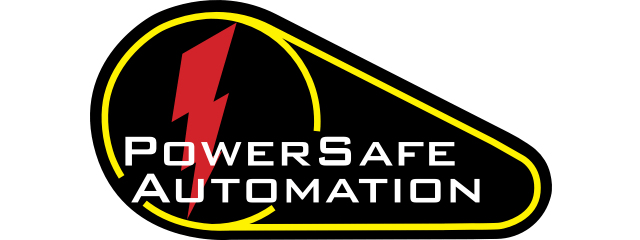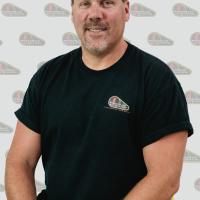Why Hiring a Turnkey Machine Guarding Contractor with In-House Engineers Is the Smartest Investment for Manufacturers
Manufacturing companies face increasing pressure to improve workplace safety, ensure OSHA/ANSI compliance, and minimize downtime — all without derailing operations or blowing the budget. One major safety hurdle? Retrofitting or installing compliant machine guarding solutions on legacy or new equipment.
Too often, manufacturers take a piecemeal approach — contracting 6 to 8 different vendors to handle machine guarding design, mechanical fabrication, control integration, risk assessment, installation, and validation. While this might seem like a flexible or cost-saving option, it’s often riddled with complications, miscommunication, and delays.
There’s a better way: hiring a turnkey machine guarding contractor with a team of controls engineers, mechanical engineers, application engineers, and safety specialists who work together under one roof. Providers like Power Safe Automation offer end-to-end safety solutions, making them the smarter and more scalable choice.
For example, the controls integrator may not understand the physical guarding design. The guarding fabricator may not know how to install interlocks correctly. The installer may not understand OSHA regulations or ANSI B11.19 standards.
This fragmented approach puts your team in the role of project manager, quality inspector, and risk assessor — all without the in-house knowledge to catch critical safety or integration issues.
The Value of a Single, Integrated Safety Team
A true turnkey guarding contractor supplies everything in-house, including:
-
Mechanical Engineering – for customized guard design and safe ergonomics
-
Controls Engineering – for safety-rated circuits and fail-safe logic
-
Applications Engineers – for selecting the right sensors, relays, or e-stops
-
Safety Specialists – for risk assessments, validation, and compliance alignment
This unified team ensures that the design, integration, installation, and validation phases flow seamlessly. You’re not coordinating multiple firms — you're relying on one trusted partner with complete visibility into every detail.
Engineering Roles That Matter in Machine Guarding
Let’s break down the critical roles that a turnkey provider like Power Safe Automation includes in their process:
Mechanical Engineers:
-
Design guarding systems around equipment footprint
-
Avoid pinch points, reach-through hazards, and ergonomic issues
-
Select materials (steel, aluminum extrusion, mesh, polycarbonate) for safety and durability
Controls Engineers:
-
Design control circuits that meet ISO 13849 or ANSI B11.26 safety standards
-
Integrate light curtains, area scanners, locking gates, and safety relays
-
Ensure system control reliability (Category 3/4, SIL 2/3)
Applications Engineers:
-
Match guarding to machine cycles, material flow, operator access
-
Ensure safety doesn’t interfere with production efficiency
-
Optimize for retrofits or high-volume guarding across similar machines
Safety & Risk Assessment Specialists:
-
Conduct formal risk assessments per ANSI B11.0 and OSHA 1910 Subpart O
-
Document safety scores and required mitigations
-
Guide facilities through post-installation validation and compliance
The Power of End-to-End Accountability
When multiple vendors are involved, finger-pointing becomes the norm.
-
Guarding doesn’t fit? Blame the designer.
-
E-stop doesn’t kill power? Blame the controls guy.
-
Install didn’t pass OSHA inspection? Blame the safety assessor.
With a turnkey contractor, there’s one name on the line: theirs.
That means:
-
One contract
-
One warranty
-
One clear contact for questions or updates
-
One set of project goals
They handle design, build, install, and support — so you can focus on operations.
Faster Timelines with Fewer Delays
In manufacturing, time is money. Delays in safety upgrades delay productivity and compliance. Coordinating separate vendors often leads to:
-
Bottlenecks in scheduling
-
Extended machine downtime
-
Incomplete or mismatched components on delivery
-
Rescheduling costs for installation crews
Turnkey contractors avoid these issues by managing every phase internally. From CAD models to onsite install, everything is streamlined — often cutting project timelines by 25% to 40%.
OSHA & ANSI Compliance Without Confusion
Machine guarding is more than just metal panels and locks. It’s governed by complex standards like:
-
OSHA 1910 Subpart O
-
ANSI B11 series (B11.0, B11.19, B11.26, etc.)
-
ISO 13849 (for safety control systems)
-
NFPA 79 (Electrical Safety)
When each vendor interprets compliance differently, the result is inconsistent — and potentially non-compliant — safety systems.
Turnkey safety firms stay up to date with regulatory changes and ensure:
-
Guarding is not just present, but effective and compliant
-
Risk assessments align with expected OSHA inspection criteria
-
All wiring and control systems meet redundancy and reliability standards
Real-World Case Studies and ROI
Case Study Example: A multi-site packaging manufacturer contracted Power Safe Automation to retrofit guarding on 15 legacy machines across 3 facilities. Instead of managing 5 different subcontractors, they chose the turnkey route.
Results:
-
Project completed in 30% less time than their prior vendor-based approach
-
OSHA passed all guarding audits without citation
-
Reduced change orders by 70>#/p###
-
Operator satisfaction improved due to improved access and visibility
Their leadership stated:
“The value wasn’t just in the guarding — it was in the stress they removed from our project teams.”
When You Need Agility and Scale — Go Turnkey
Whether you're protecting a single lathe or scaling across 100+ machines in multiple plants, a turnkey provider brings the tools and agility to match your scope.
-
Standardized guarding for similar machines
-
Scalable engineering documentation for validation
-
Repeatable install and training processes
-
Integrated change management across plants
Trying to replicate this with a vendor mix leads to confusion, inconsistent quality, and difficulty training employees on how to safely operate guarded equipment.
Why Power Safe Automation Is the Right Partner
Power Safe Automation is uniquely positioned as a leader in turnkey safety because we:
-
Employ cross-functional engineers and machine safety experts
-
Offer modular and custom guarding solutions
-
Handle everything in-house — from concept to compliance
-
Provide national support with scalable programs for multi-facility clients
-
Deliver value-added services like training, SOP documentation, and compliance audits
We don’t just sell guarding — we engineer peace of mind.
Final Thoughts: Save Time, Save Money, Save Lives
Hiring multiple vendors to handle your machine guarding is like assembling a puzzle with pieces from different boxes. You might eventually make something work, but it will cost more, take longer, and probably fall short of regulatory expectations.
By hiring a turnkey contractor with in-house engineers — mechanical, electrical, application, and safety — you’re choosing to:
-
Eliminate finger-pointing
-
Ensure engineering-grade compliance
-
Streamline timelines
-
Maximize long-term value
In the end, machine guarding is about protecting people, minimizing liability, and sustaining operations — and that’s too important to leave to chance.



